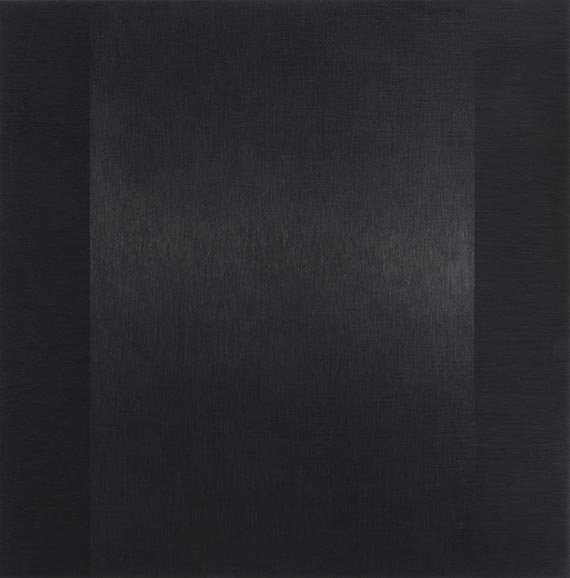26
Frank Gerritz
Between the Lines - "Pole", 2000.
Base d'asta: € 10,000 / $ 14,160
Between the Lines - "Pole". 2000.
Graphite on a MDF plate, in the artist´s original frame.
Signed, dated, titled, and inscribed with two direction arrows on the reverse of the rear board. 60 x 60 x 5,8 cm (23,6 x 23,6 x 2,2 in). Incl. frame: 92 x 92 x 10 cm (36,2 x 36,2 x 3,9 in).
[AR].
• Strictly conceptual work reduced to geometric forms.
• Frank Gerritz is regarded as an important representative of conceptual art and is particularly known for his monochrome graphite and paint stick works.
• Art critic Donald Kuspit once praised the German artist as the last “abstract hardliner”.
PROVENANCE: Private collection.
From a North German collection.
EXHIBITION: Frank Gerritz. Coded Language, Galerie Vera Munro, Hamburg, 2001.
In good condition. Four to five very small light spots of unknown origin in the lower right corner, possibly studio marks. The frame has minor handling marks and dirt. Not unframed for cataloging.
Graphite on a MDF plate, in the artist´s original frame.
Signed, dated, titled, and inscribed with two direction arrows on the reverse of the rear board. 60 x 60 x 5,8 cm (23,6 x 23,6 x 2,2 in). Incl. frame: 92 x 92 x 10 cm (36,2 x 36,2 x 3,9 in).
[AR].
• Strictly conceptual work reduced to geometric forms.
• Frank Gerritz is regarded as an important representative of conceptual art and is particularly known for his monochrome graphite and paint stick works.
• Art critic Donald Kuspit once praised the German artist as the last “abstract hardliner”.
PROVENANCE: Private collection.
From a North German collection.
EXHIBITION: Frank Gerritz. Coded Language, Galerie Vera Munro, Hamburg, 2001.
In good condition. Four to five very small light spots of unknown origin in the lower right corner, possibly studio marks. The frame has minor handling marks and dirt. Not unframed for cataloging.
26
Frank Gerritz
Between the Lines - "Pole", 2000.
Base d'asta: € 10,000 / $ 14,160




 Lot 26
Lot 26 